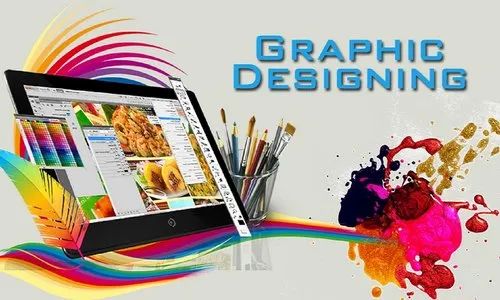- August 17, 2019
- by nishantsingh.ms123
- SEO News
- 0 Comments

Mastering Graphic Design: The Ultimate Guide
Hey everyone welcome back to my channel! Today, we’re diving into the world of graphic design. Whether you’re a beginner looking to learn the basics a small business owner wanting to create compelling visuals, or a seasoned designer aiming to stay updated with the latest trends, this video will provide you with a comprehensive guide to understanding and mastering graphic design.
What is Graphic Design
Graphic design is the art and practice of creating visual content to communicate messages. By applying visual hierarchy and page layout techniques, designers use typography and pictures to meet users’ specific needs and focus on the logic of displaying elements in interactive designs to optimize the user experience.
Why is Graphic Design Important
- First Impressions Matter: High-quality graphic design helps make a strong first impression, which can significantly impact a customer’s perception of your brand.
- Brand Identity: Consistent and professional graphic design helps establish and strengthen your brand identity.
- Communication: Graphic design is a powerful tool for visual communication, helping convey your message more effectively than words alone.
- Trust and Credibility: Professionally designed visuals can enhance the credibility and trustworthiness of your business or project.
Key Elements of Graphic Design
- Line: Lines are used to create shapes, patterns, and textures. They can guide the viewer’s eye and convey movement.
- Color: Color theory involves understanding how colors interact, their emotional impact, and how to use them effectively.
- Shape: Shapes are the foundation of design. They can be geometric, organic, or abstract and are used to create structure.
- Texture: Texture adds depth and interest to designs. It can be visual or tactile.
- Typography: The art of arranging type to make written language legible, readable, and visually appealing.
- Space: The area around and between elements in a design. Proper use of space can create balance and harmony.
- Image: Images, illustrations, and icons can convey messages quickly and effectively.
Steps to Creating a Graphic Design Project
- Understand the Brief
- Client Needs: Understand the client’s goals, target audience, and the message they want to convey.
- Scope and Deliverables: Define the project scope, including the deliverables, deadlines, and budget.
- Research and Brainstorm
- Market Research: Study competitors and market trends to understand what works and what doesn’t.
- Mood Boards: Create mood boards to gather inspiration and define the visual style.
- Concept Development
- Sketching: Start with rough sketches to explore different ideas and concepts.
- Wireframing: Create wireframes to outline the structure and layout of your design.
- Design and Execution
- Color and Typography: Choose a color scheme and typography that align with the brand and message.
- Composition: Arrange elements to create a balanced and harmonious composition.
- Software Tools: Use graphic design software like Adobe Photoshop, Illustrator, or InDesign to create your design.
- Review and Feedback
- Client Feedback: Present your design to the client and gather feedback.
- Revisions: Make necessary revisions based on feedback to refine the design.
- Final Delivery
- File Formats: Deliver the final design in the appropriate file formats for print or digital use.
- Guidelines: Provide brand guidelines to ensure consistent use of the design elements.
Tools and Software for Graphic Design
- Adobe Photoshop: For photo editing, digital painting, and graphic design.
- Adobe Illustrator: For vector graphics and illustrations.
- Adobe InDesign: For layout design, especially for print materials like brochures and magazines.
- Canva: An online tool for creating graphics with pre-made templates, suitable for beginners.
- Sketch: For user interface and user experience design.
- Figma: A collaborative interface design tool, ideal for web and app design.
- CorelDRAW: For vector illustration and page layout.
Best Practices in Graphic Design
- Keep It Simple: Avoid clutter and focus on the essential elements to convey your message.
- Consistency: Maintain consistency in colors, fonts, and styles to strengthen your brand identity.
- Balance and Alignment: Use grids and alignment tools to create balanced and harmonious designs.
- Readability: Ensure that your text is easy to read by choosing appropriate fonts and sizes.
- Contrast: Use contrast to highlight important elements and create visual interest.
- Hierarchy: Establish a clear hierarchy to guide the viewer’s eye through the design.
- Adaptability: Design with adaptability in mind, ensuring your visuals look great on different devices and media.
Future Trends in Graphic Design
- Minimalism: The trend towards simplicity and minimalism is likely to continue, focusing on clean and uncluttered designs.
- 3D Design: The use of 3D elements and visuals is becoming more popular, providing a more immersive experience.
- Sustainable Design: Increasing awareness of environmental issues is leading to more sustainable and eco-friendly design practices.
- Motion Graphics: The use of animation and motion graphics is growing, particularly for digital and social media content.
- Augmented Reality (AR): AR is becoming more prevalent, allowing for interactive and engaging user experiences.
- Custom Illustrations: Unique and custom illustrations are on the rise, helping brands stand out with personalized visuals.
Conclusion
Graphic design is a dynamic and essential field that plays a crucial role in how we communicate and perceive information. By understanding the fundamentals utilizing the right tools, and staying updated with the latest trends. you can create compelling and effective designs that resonate with your audience.
Thank you for watching. If you found this video helpful make sure to like, comment, and subscribe for more tips and insights on graphic design and creative processes. If you have any questions or topics you want me to cover in future videos, drop them in the comments below. See you next time.



